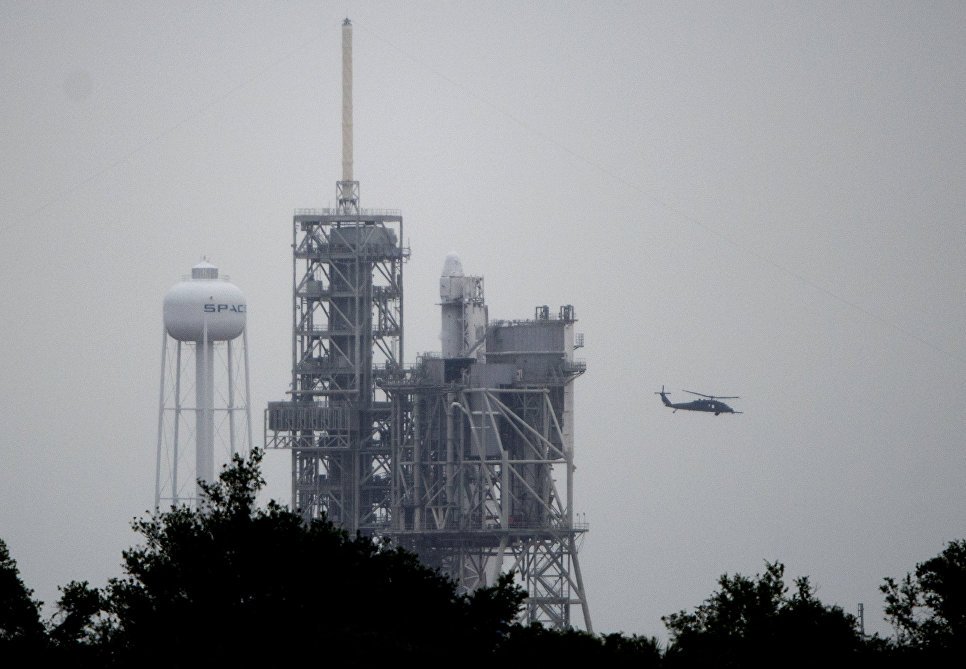 Falcon 9 on the launch pad
Falcon 9 on the launch padThe mission of the
CRS-11 , during which the Dragon spacecraft was sent to the ISS with cargo on board, is remarkable for many. Not least due to the fact that this time a large number of scientific equipment was sent to the ISS, which will allow for a number of interesting and necessary experiments for science (they are planned to be about 250). About it on Geektimes
already wrote .
In addition, this
mission differs from all others in that the ISS launched a space truck that was already in space. We are talking about the reuse of the Dragon spacecraft, which was previously returned to Earth and restored. Thus, SpaceX proves the possibility of cheaper flights to space and cargo delivery to the ISS.
Generally speaking, the Dragon truck (different ships) has been in space for 13 times already, 11 launches were carried out within the framework of the NASA program, which is called the
Commercial Resupply Services (CRS) program . In total, two space trucks are flying to the ISS under this program. Dragon is the first, and Orbital ATK's Cygnus is the second. But only Dragon survived the flight into space, the descent to Earth and re-flight.
Dragon consists of a sealed capsule that carries the load to the station and collects waste from the ISS, as well as the unpressurized compartment in which the solar panels are placed. Unfortunately, you can only restore the capsule itself, but the compartment with batteries and other equipment cannot be reused - it burns in the atmosphere upon return. Before returning the capsule is separated from this compartment.
The first Dragon flew into space in December 2010, twice circling the Earth and then plunging into the waters of the Pacific Ocean. In May 2012 a second truck went into orbit, which had already flown to the ISS. By the way, Dragon, which carried its cargo to the orbital station now, first flew into space in 2014, as part of the CRS-4 mission. It was launched from Cape Canaveral on September 21, and the truck docked with the ISS on the 23rd. October 25, Dragon returned to Earth, descending by parachute. The system did not land, but splashed down in the Pacific Ocean.
After that, the truck was carefully inspected and rebuilt, including the replacement of the heat shield. As it turned out, most of the Dragon systems were preserved in working condition.
Just two months ago, SpaceX successfully launched Falcon 9 into space, re-using the first landing stage. Then the company sent an SES-10 communications satellite into orbit. By the way, during the current mission the company again managed to return the first launch stage of the rocket to Earth.
SpaceX had to go a long way in order to make this possible. Now, the return of the stages of the launch vehicles of this company is almost a routine task, but behind all this lies the complex, painstaking work of engineers, scientists, Mask himself and other employees.
Initially, the company
tried to return the first stage of its rocket on parachutes. But the stage could not stand the entrance to the atmosphere, so that the parachutes were useless. After updating in 2009, the configuration of the stage has been changed. So, the Merlin-1C engines were replaced with the Merlin-1D, and the engines were also placed not by a square, but by an octagon, naming this configuration OctaWeb.
In 2015, the final development was presented, called Falcon 9 Full Thrust. There have been many changes compared to the first options. One of the most important modifications is the compression of liquid oxygen at ultra-low temperature, which made it possible to fill in a larger volume of oxidizer. By the way, in 2016 when refueling Falcon 9 an
accident happened, as a result of which the rocket exploded. SpaceX simultaneously lost a rocket and a cargo in the amount of $ 200 million. Then the experts found out that the problem was a thin tank bulkhead, which could not withstand the increased pressure. Generally speaking, then several technical failures occurred simultaneously, which was considered practically impossible, which led to the explosion.
The carrier rocket Falcon 9 first made a scheduled flight in June 2010. Well, today at 00:07 Moscow time, the next launch took place, during which it is planned to deliver about three tons of cargo to the ISS. 8 minutes after launch, the first stage of the rocket successfully landed near the launch site. The Dragon spacecraft was successfully launched into an intermediate orbit. This launch should have been done as early as June 2, but due to unfavorable weather, it had to be postponed to June 4, and the decision to cancel the launch was made a few minutes before the start.
Well, it remains only to congratulate SpaceX with another success.